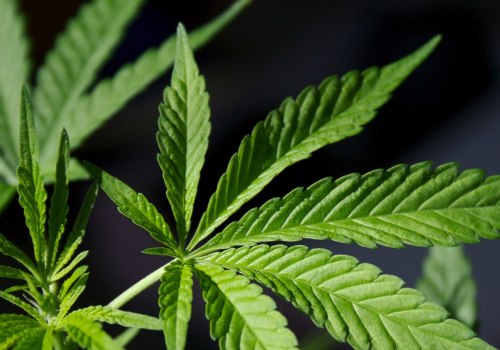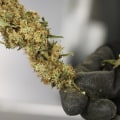However, many states allow medical use to treat pain, nausea, and other symptoms. Medical marijuana is a term for derivatives of the Cannabis sativa plant that are used to relieve symptoms caused by certain medical conditions. Medical marijuana is also known as medical cannabis. The two main types of cannabis, Sativa and Indica, are used for a variety of medicinal and recreational purposes.
Another common medical use of Sativa strains is to increase energy levels and promote productivity. As social tensions during the day, sativas tend to provoke activity, reduce levels of apathy and promote a desire to relate to others in a social environment. Cannabaceae) is one of the oldest medicinal plants used by humans. For millennia, the plant has also been used for the production of fiber, oil and simply as an additive to food products.
This chapter provides an overview of the botanical aspects of the genus Cannabis, such as macroscopic and microscopic characteristics, taxonomic classification, current varieties, genomics. In addition, geographical distribution, agricultural status and germplasm conservation are provided. This chapter presents the current state of knowledge of the different forms of cultivation, including outdoor, indoor and micropropagation. It has been used medicinally in many cultures for hundreds of years, for example, for the treatment of pain, spasms, asthma, insomnia, depression and loss of appetite.
In modern medicine, cannabinoid-based drugs (CBM) have once again gained importance, following the determination of the exact chemical structure of Δ9-tetrahydrocannabinol (THC), the most psychoactive ingredient in Cannabis sativa L. Cannabaceae) is one of the earliest known cultivated plants. It is a Schedule I drug in the United States, but it is accepted in 16 states and the District of Columbia for medicinal purposes. It is one of the highest monetary value crops grown in the United States and presents a significant caseload for forensic chemists responsible for quantifying and identifying the material.
It is one of the oldest known cultivated plants, with a long history of medical use. Cannabis produces a unique class of terpenophenolic compounds called cannabinoids, of which 104 have been isolated, the main biologically active being Δ9-tetrahydrocannabinol. Cannabidiol, an antiepileptic, is also important. Cannabis is an annual species, usually dioecious and occasionally monoecious, pollinated by the wind and is highly allogamous in nature (cross-fertilization).
Therefore, it is very difficult to maintain the efficacy of selected elite varieties with high yield of Δ9-tetrahydrocannabinol grown from seed in field or greenhouse conditions. Therefore, careful screening of elite mother clones using GC-FID and their propagation using vegetative cuttings or advanced biotechnological approaches, including micropropagation, is the most appropriate way to maintain quality. This chapter describes botany, species debate, phenotype, high-yield clone screening using GC-FID, indoor and outdoor cultivation, micropropagation, quality assurance of propagated plants, harvesting, processing and storage. Commonly called Cannabis) is a herbaceous plant that belongs to the genus Cannabaceae, family Cannabaceae.
It is normally a dioecious wind-pollinated herb, meaning that male and female reproductive structures are on separate plants, although monoecious plants may occur in some populations (Divashuk, Alexandrov, Razumova, Kirov, & Karlov, 201. Sativa strains are considered most commonly energizers and mood-lifting. Marijuana (Cannabis sativa) has been used all over the world medically, recreationally and spiritually for thousands of years. In South Africa, from the mid-19th century to the 1920s, practitioners prescribed it for a multitude of conditions. In 1928 it was classified as a Schedule I substance, illegal and of no medical value.
Ironically, with this ban, cannabis became the most widely used illicit recreational drug, not just in South Africa, but around the world. Cannabis is generally considered pleasant and relaxing without the addictive risks of opioids or stimulants. In alternative medicine circles, it has never lost its appeal. To date, 23 states in the U.S.
UU. have legalized its medical use despite the federal ban. Unfortunately, little about cannabis is not without controversy. Its main active ingredient, δ-9-tetrahydrocannabinol (THC), was not isolated until 1964, and it wasn't until the 1990s that the far-reaching modulatory activities of the endocannabinoid system in the human body were studied.
The elucidation of this system raises the possibility of many promising pharmaceutical applications, even when restrictions show no signs of easing. Recreational cannabis use continues to increase, despite growing evidence of its addictive potential, especially in young people. Public approval boosts legalization efforts for medical cannabis without the scientific data normally required to justify the introduction of a new drug. This review explores these controversies and whether cannabis is a panacea, a scourge, or both.
If you're not quite sure which strain of medical cannabis will help with your condition, then you're in the right place. Cannabis sativa-specific primers (Figure 21), within the intergenic spacer between the 3' exon of trNL and the trNF gene in the chloroplast, only yield a PCR product in the presence of Cannabis sativa. . .










